Trees and power lines – your responsibilities
Home / Trees & vegetation / Trees and power lines – your responsibilities
What are property owners responsible for when it comes to trees and vegetation?
Tree owners are responsible for their trees and vegetation. This includes paying for any damage caused by your trees and vegetation to the electricity network.
Please check your trees, hedges, or shelter belts regularly. If you are not sure what to look for, please call us so we can help.
We’re here to help. Get in touch if you need help. Or, check out our FAQs.
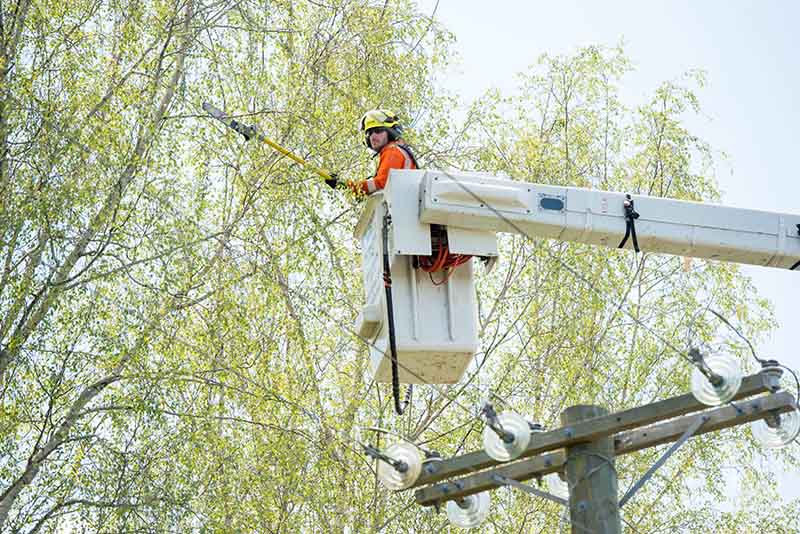
Tree owners’ responsibilities
Trees need to be kept a safe distance away from power lines and other electricity network equipment because:
- Trees and vegetation coming into contact with power lines can cause power outages, not just for the tree owners but also the wider community.
- Children who climb trees close to power lines are at risk of serious injury or death.
- In severe weather conditions, vegetation can become electrically “live” and may electrocute anyone touching it.
- In bad weather, trees can fall or branches break away causing damage to power lines resulting in a power outage. In snow or icy conditions, the additional weight on the tree can cause a similar scenario.
- Trees close to lines may cause electrical sparking resulting in fire.
- Tree roots can grow around underground electricity cables, rupturing the insulation and causing power outages.
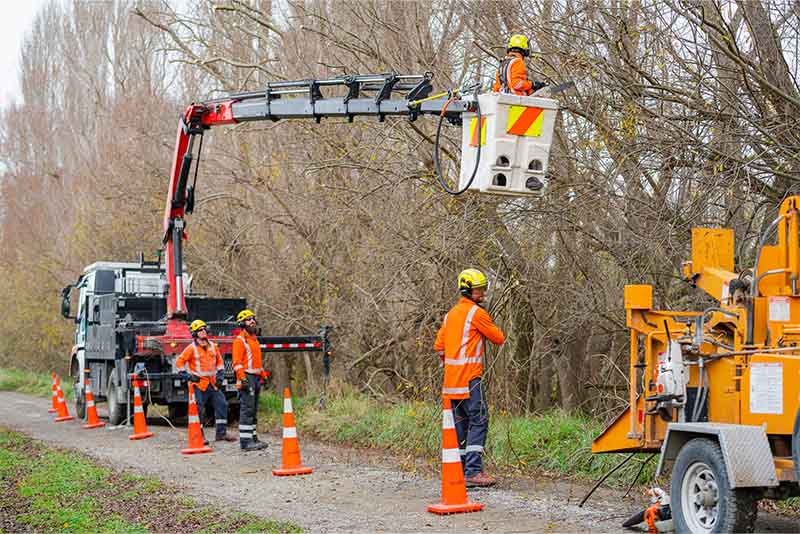
Electricity regulations
What do the Electricity (Hazards from Trees) Regulations mean to you?
The purpose of these regulations is to protect the security of the supply of electricity, and the safety of the public.
The regulations place responsibilities on tree owners (you) and the electricity network operator (MainPower). Following the regulations will help ensure security of supply to you and the wider community.
Click here to view the Electricity (Hazards from Trees) Regulations 2003.
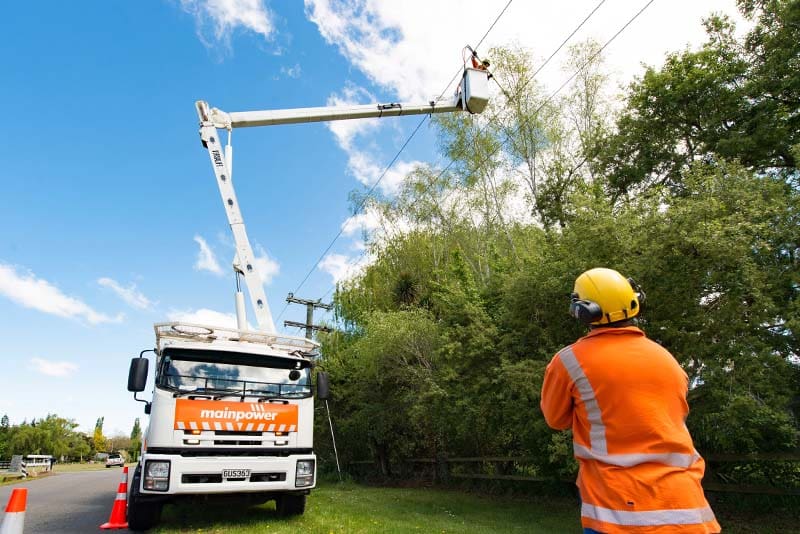
Tree owner offences
There are penalties for tree owners who do not comply with a written request to cut their trees, or do not advise MainPower of the time and location of the cutting work.
On summary conviction, tree owners may be liable for a fine not exceeding $10,000 and a further fine of $500 for every day on which the offence continues.
If your trees are considered an immediate danger to our network, MainPower has an obligation to remove any hazard. If you have failed to keep your trees clear of power lines, or have not responded to our requests, then as the tree owner you are responsible for all costs incurred by us to remove any hazard and to repair any network assets that have been damaged.
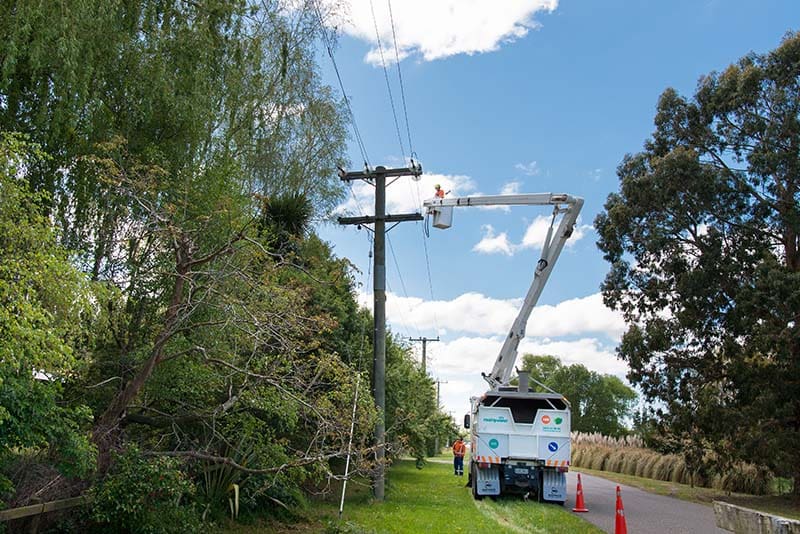
Notifications from MainPower
When MainPower is aware of trees getting too close to power lines and equipment, we will send notifications to landowners.
The notice zones vary depending on the voltage of the power lines. Click here to find out more about when to trim your trees.
It is your responsibility to make sure your trees and vegetation are clear of network assets.
If you are unsure, give us a call on 0800 30 90 80 and we can help.
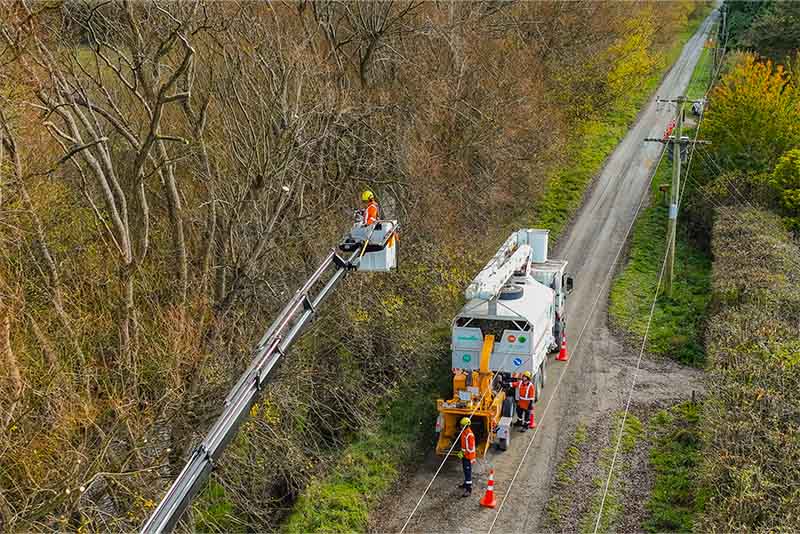
Severe weather – who’s liable?
If your belongings (such as a trampoline) are picked up in a severe weather event and damages part of our lines/network, any damage created could result in the owner (you) being responsible for the costs associated with any repairs needed to fix the network.
To prevent these types of instances from occurring, we suggest making sure such items are secured correctly to your property in case of extreme weather events. The list includes but is not limited to:
- trampolines and outdoor playsets (Wendy houses, swing sets, etc.)
- bins and recycling boxes
- boats, caravans, and bikes
- outdoor furniture and garden sheds
- garden ornaments and potted plants
- hardware, tools, and building materials/accessories
- firewood and branches
- gas tanks, fuel drums, etc.
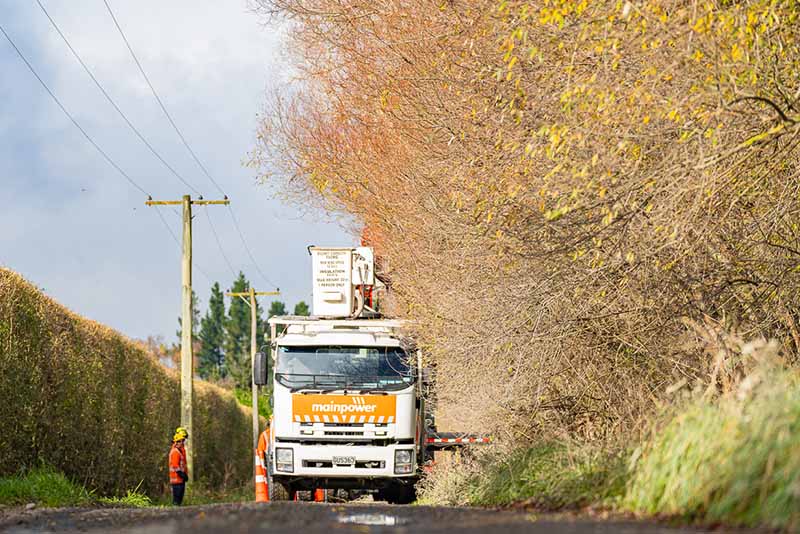
MainPower network
What is classified as the MainPower network?
Our network is classified under the Electricity Act, regulations, standards, industry guides and codes of practice as elements of the Network Operator’s electrical infrastructure associated with the transmission and distribution of electricity.
This includes but is not limited to overhead lines; overhead line supports; stay wires; open terminal transformers; underground cables; and switchgear.
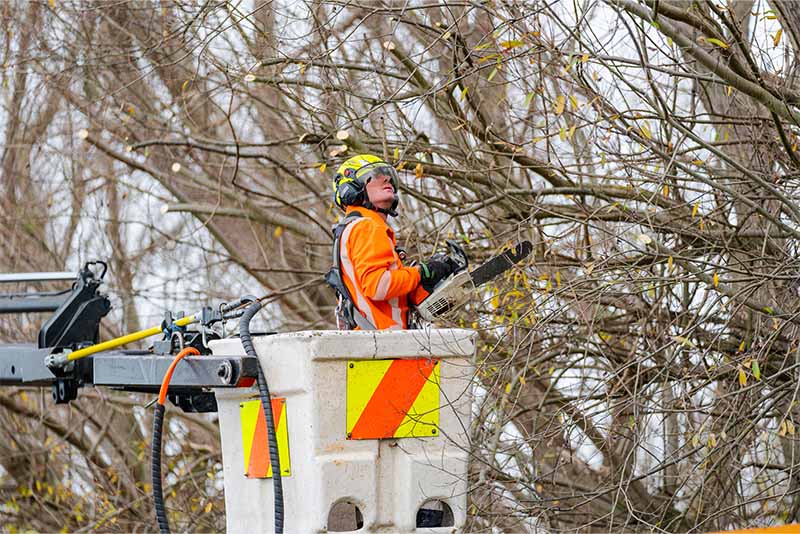
Plan before you plant
When planting trees or vegetation under or near power lines, consider power line friendly species that are less likely to cause expensive damage to electricity assets.
- View our “Look up before you plant” fact sheet here.
- Alternatively, talk to a plant nursery to find out what plants will be best for your situation.
We’re here to help
If you need some assistance or advice, please get in touch with our team.